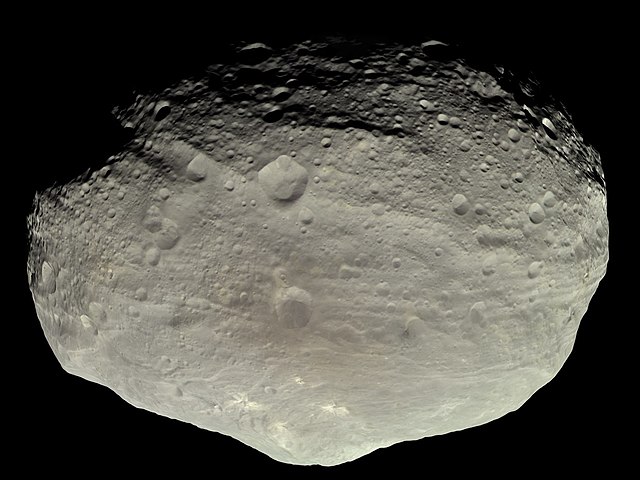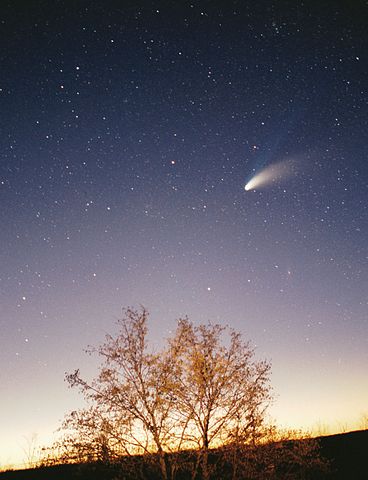English Across the Curriculum
The Solar System
Comets and Asteroids
Comets
A comet is an object in space that revolves around the sun. It has a long tail of light, but only when it passes near to the sun. A long time ago, people thought that comets were only strange changes of sunlight in the atmosphere, but Isaac Newton proved that they were like planets with orbits.
A comet consists of a core, called the nucleus and a surrounding cloud made up of ice , dust and other gases , like hydrogen, oxygen and carbon. Some scientists call it a dirty snowball. A comet may be very big, like the planet Jupiter or even the sun, but the nucleus itself is mostly very small.
When a comet approaches the sun, the heat of the sun melts the icy parts and it becomes brighter and brighter. The comet gets one or more tails that may be so big, that they can extend millions of km into space. This tail always points away from the sun even when the comet shoots back into space. These tails are mostly made up of gases and dust. When comets move away from the sun less gas and dust are lost and the tails disappear. Some comets with small orbits have short tails, so that they are almost invisible.
Not all comets appear with the same brightness to us on earth. Astronomers have recorded 1,400 comets up to now and less than half of them have had tails that we could see. Comets have elliptical orbits and the time they take to orbit the sun has been calculated by astronomers. Some comets - like Donati's comet - have a period of 3 or 4 years, others have periods of 2,000 years and more. Some comets have orbits that even take them out of our solar system.
Halley's Comet is the best-known comet in our solar system. It appears every 76 years and is bright enough to be seen without a telescope.
Comets were once believed to come from outside the solar system. Today, scientists think that they originate in the outer, colder parts of our solar system from rocks and ice that made up the planets.
Comets have often appeared at the time of important events. Whenever comets appeared, people thought they would crash into our Earth and destroy all life. A collision of a comet would have catastrophic effects on our Earth, but such a crash is not likely. In 1994 a comet - Shoemaker-Levy 9 - broke into many small pieces as it came very near to the planet Jupiter. Some of these fragments - up to 2 km wide - crashed on the surface of the planet .
Asteroids
Asteroids are small pieces of rock that move around the sun between Mars and Jupiter. Over 200 asteroids have a diameter of more than 100 km and thousands of smaller ones exist. The largest asteroid that man knows of is Ceres, with a diameter of 1,100 km.
It is not clear how asteroids developed. Scientists today think that they may be in a place where a planet should have formed. But such a planet couldn't form because of the power of Jupiter. Another theory says that the asteroids were a big planet that was destroyed in a collision a long time ago.
There are also other asteroid belts in the solar system. New asteroids have been found between Saturn and Uranus. Over 400 asteroids have been found near the Earth and Venus. NASA sends probes to asteroids when they are close to Earth, in order to discover what they are made of.
Asteroids that are on a course that may hit the Earth are called meteorites. Most of them burn up in our atmosphere but some of them are big enough to hit the Earth. About 65 million years ago, a large meteorite crashed into the Earth. Scientists believe that a lot of dust and rock was stirred up and made our planet very dark - so sunlight couldn't get in. It became colder and colder and the dinosaurs probably died out this way.

Vesta - one of the largest objects in the asteroid belt
Image: NASA / JPL / MPS / DLR / IDA / Björn Jónsson,
Public domain, via Wikimedia Commons
